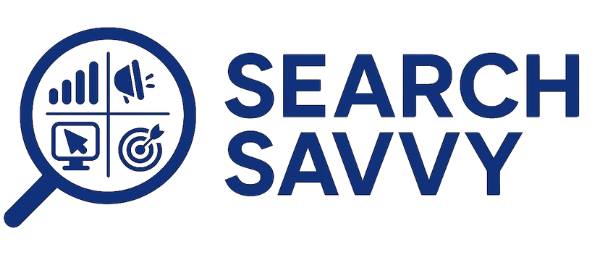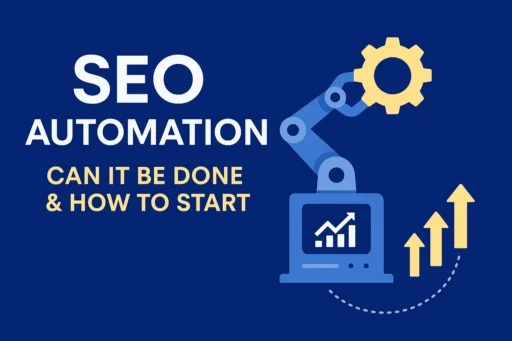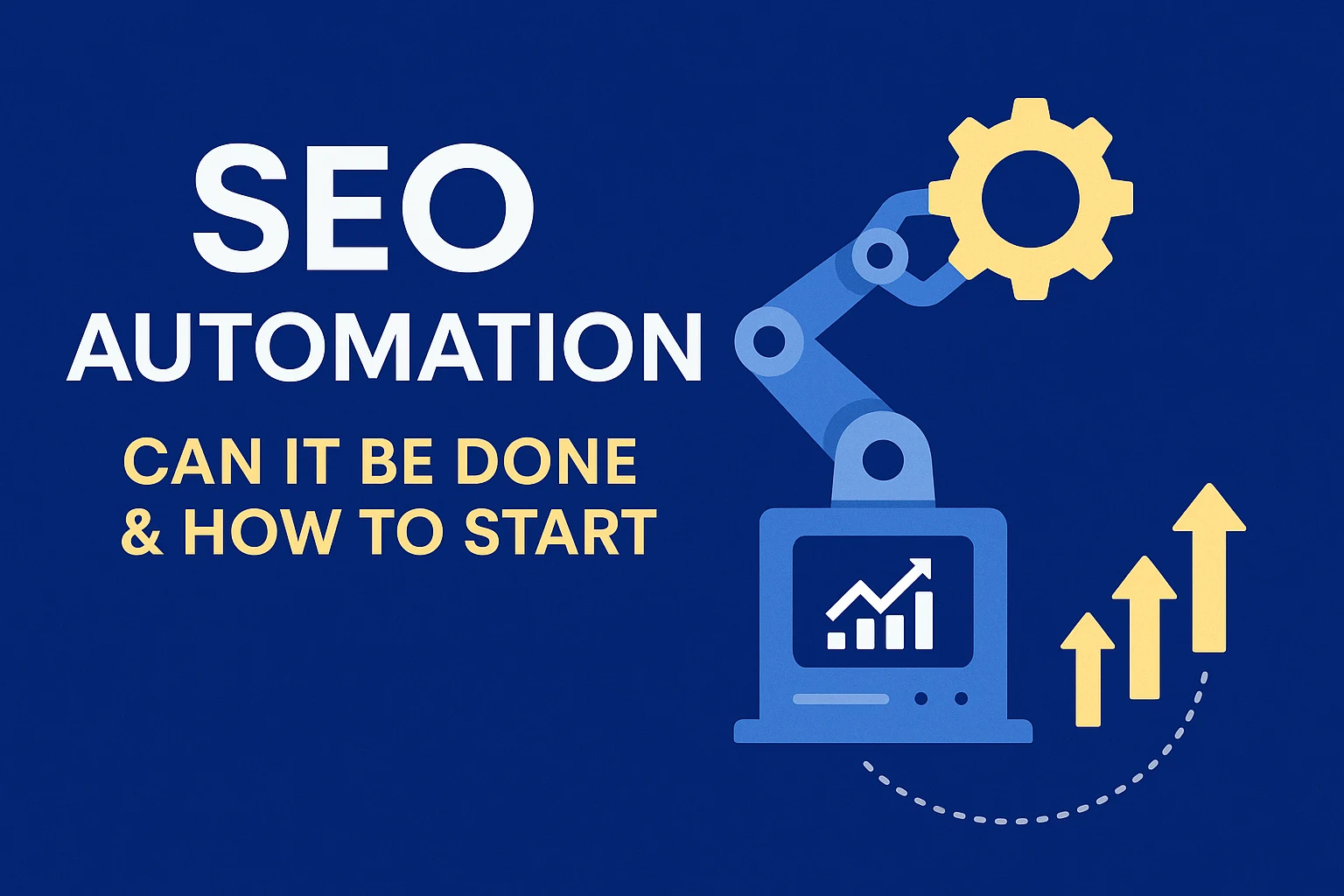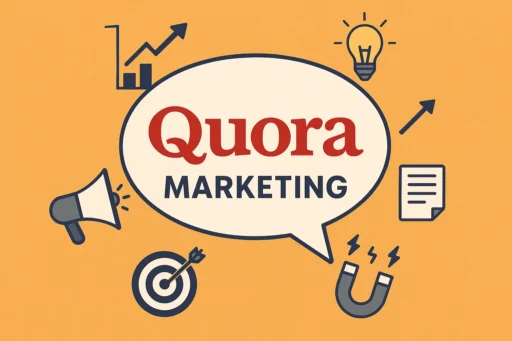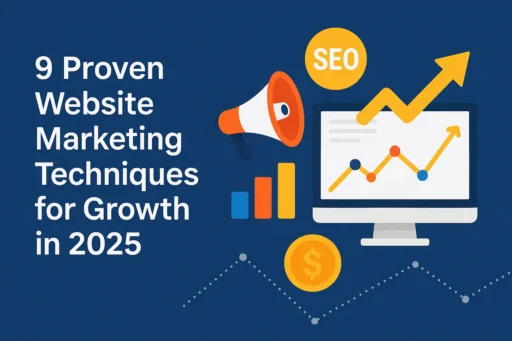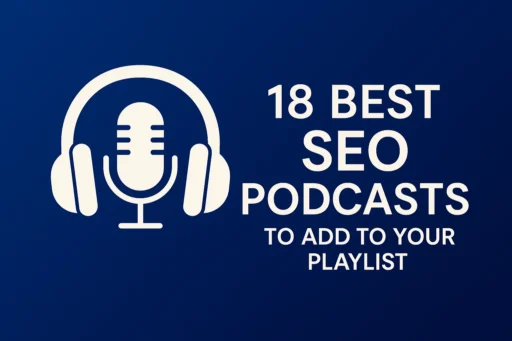SEO automation has transformed from an optional luxury to an essential strategy in 2025. As search engines become increasingly sophisticated and competition intensifies, businesses are turning to automation tools to streamline their optimization efforts. But can SEO truly be automated, and more importantly, should it be?
At Search Savvy, we’ve witnessed firsthand how automation has revolutionized digital marketing workflows. The question isn’t whether to automate-it’s understanding what to automate and how to maintain the human touch that makes content truly valuable. According to Search Savvy’s insights, the most successful SEO strategies in 2025 blend intelligent automation with strategic human oversight.
This comprehensive guide explores the landscape of SEO automation, examining which tasks benefit from automation, the tools that make it possible, and the critical balance between efficiency and quality. Whether you’re a marketing professional looking to scale your efforts or a business owner seeking competitive advantages, understanding SEO automation is no longer optional.
What Is SEO Automation in 2025?
SEO automation refers to using software tools and artificial intelligence to handle repetitive, time-consuming optimization tasks that would otherwise require manual effort. Rather than replacing human expertise, automation amplifies it by processing large datasets, monitoring site performance continuously, and executing routine tasks with precision.
The evolution of SEO automation has been dramatic. Early SEO relied entirely on manual keyword research, painstaking content audits, and repetitive reporting. Today, AI-powered platforms can analyze search intent, predict keyword difficulty, and suggest content ideas in minutes rather than hours. The shift has been driven by necessity-modern SEO demands operating at a scale and speed impossible through manual methods alone.
At Search Savvy, we define effective automation as technology that handles the “grunt work” while freeing strategists to focus on high-impact decisions. This includes automating tasks like rank tracking, technical site audits, backlink monitoring, and performance reporting. The key distinction is that automation tools execute processes, while humans provide direction, creativity, and strategic thinking.
How Does SEO Automation Work?
SEO automation works through sophisticated algorithms and machine learning models that analyze vast amounts of data to identify patterns, opportunities, and issues. These systems integrate with existing tools like Google Analytics, Google Search Console, and content management systems to create seamless workflows.
The technical foundation involves API connections, data aggregation from multiple sources, and rule-based automation triggered by specific conditions. For example, when a page’s ranking drops, automated systems can instantly alert you, analyze potential causes, and recommend corrective actions based on historical data patterns.
Modern automation platforms employ natural language processing to understand search intent, computer vision for image optimization, and predictive analytics to forecast ranking potential. These technologies work together to create comprehensive automation workflows that span from keyword research through content optimization to performance monitoring.
According to recent data, 70% of SEO professionals now use automation tools to manage core workflows. The integration typically involves connecting your website, analytics platforms, and SEO tools to a central automation hub that orchestrates tasks, schedules reports, and triggers alerts based on predetermined criteria.
Why Is SEO Automation Important in 2025?
SEO automation has become critical for several compelling reasons. The digital landscape has grown exponentially more competitive, with businesses publishing millions of new pages daily. Manual optimization simply cannot keep pace with this volume while maintaining consistency and quality.
The primary advantage is efficiency. Tasks that once consumed hours-like tracking hundreds of keyword rankings, auditing technical issues across thousands of pages, or analyzing competitor strategies-now happen automatically in real-time. This efficiency translates directly into cost savings and strategic advantages.
Research shows that 84% of content marketers and SEOs say AI and automation have impacted their SEO strategy, with automation tools reducing data analysis time by up to 50%. More importantly, automation minimizes human error in repetitive tasks, ensuring consistent execution of optimization best practices across all content and pages.
Beyond efficiency, automation enables capabilities previously impossible at scale. Real-time monitoring detects algorithm updates and ranking fluctuations immediately, allowing rapid response. Automated testing can evaluate thousands of title variations or meta description combinations to identify optimal performance. Pattern recognition in massive datasets reveals opportunities human analysts might miss entirely.
Can All SEO Tasks Be Automated?
SEO automation cannot-and should not-replace all human involvement. While many tasks benefit tremendously from automation, certain aspects of SEO require human creativity, strategic thinking, and nuanced judgment that AI cannot replicate.
Tasks ideal for automation include keyword tracking and rank monitoring, which involves continuous data collection across thousands of keywords. Technical SEO audits automate the identification of broken links, crawl errors, page speed issues, and schema markup problems. Backlink monitoring, competitive analysis tracking, and performance reporting all benefit from automation’s consistent, tireless execution.
However, critical tasks must remain human-led. Content strategy and editorial direction require understanding brand voice, audience nuances, and creative storytelling that resonates emotionally. Keyword research benefits from automation for data collection, but interpreting searcher intent and identifying strategic opportunities demands human insight. Link building outreach requires personalization, relationship building, and persuasive communication that automated tools cannot authentically replicate.
At Search Savvy, we advocate for what we call “intelligent automation”-using tools to handle data-heavy, repetitive work while humans focus on strategy, creativity, and relationship building. Studies show that 93% of marketers review AI-generated content before publishing, recognizing that human oversight remains essential for quality and accuracy.
What SEO Tasks Should You Automate?
SEO automation delivers maximum value when applied to specific task categories. Understanding which processes to automate helps optimize your workflow without sacrificing quality or strategic direction.
Technical SEO Monitoring represents the strongest automation opportunity. Platforms like Screaming Frog, ContentKing, and Alli AI continuously scan websites for technical issues, identifying problems like broken links, missing meta tags, slow page speeds, and mobile usability errors. These tools can integrate with content management systems to implement fixes automatically, such as compressing images, generating XML sitemaps, and adding structured data.
Keyword Analysis and Tracking benefits enormously from automation. While keyword strategy requires human judgment, collecting search volume data, tracking ranking positions, and monitoring keyword difficulty can be fully automated. Tools like Semrush and Ahrefs automatically pull keyword metrics and export organized data to spreadsheets, saving hours of manual research.
Content Performance Analysis automates the identification of optimization opportunities. AI platforms analyze top-ranking content, identify gaps in your coverage, and suggest improvements based on ranking factors. This includes recommending ideal content length, identifying missing semantic keywords, and suggesting internal linking opportunities.
Reporting and Analytics should be automated to ensure stakeholders receive consistent, timely insights. Automated dashboards pull data from multiple sources-Google Analytics, Search Console, rank trackers-into unified reports that update in real-time. This eliminates manual data compilation and ensures accuracy.
Competitive Intelligence automation tracks competitor rankings, backlink profiles, content publication schedules, and keyword targeting. Rather than manually checking competitor sites, automation alerts you to significant changes or new opportunities in your competitive landscape.
What Are the Best SEO Automation Tools for 2025?
SEO automation in 2025 relies on specialized tools designed for specific optimization tasks. Selecting the right combination creates efficient workflows that scale your efforts without compromising quality.
Semrush stands as the most comprehensive SEO platform, offering keyword research, site audits, competitor analysis, and automated rank tracking in one interface. Its Agency Growth Kit includes lead generation tools and client portals, making it essential for agencies managing multiple clients. Semrush automates data collection and analysis, though content changes remain manual.
SurferSEO excels at content optimization through data-driven analysis of top-ranking pages. Its Grow Flow feature automates audit processes, identifying optimization opportunities and providing actionable recommendations. Content optimized with Surfer typically ranks 3-5 positions higher according to user reports.
Ahrefs dominates backlink analysis and competitor research, offering comprehensive link intelligence and content gap identification. Its site audit tool automatically identifies technical issues, while keyword research features uncover strategic opportunities based on traffic potential.
OTTO SEO provides AI-powered, one-click automation for technical fixes, content optimization, and Google Business Profile management. It’s designed specifically for teams needing to reduce manual workload across multiple client sites.
Screaming Frog offers powerful technical SEO crawling capabilities, identifying structural issues, broken links, and optimization opportunities. Its automation features integrate with other tools to create comprehensive technical audit workflows.
AI-Powered Content Tools like Jasper AI, Frase, and ContentShake AI combine content generation with SEO optimization, analyzing top-performing content and generating briefs with suggested headings, keywords, and structure. These tools help scale content creation while maintaining optimization best practices.
How Do You Implement SEO Automation Successfully?
SEO automation implementation requires strategic planning to ensure tools enhance rather than complicate your workflow. Success depends on choosing appropriate tools, integrating them effectively, and maintaining proper oversight.
Start by identifying repetitive tasks that consume disproportionate time relative to their strategic value. Common candidates include daily rank tracking, weekly technical audits, monthly competitor analysis, and report generation. Document current time investment in these tasks to measure automation’s impact.
Next, evaluate and select tools that fit your specific needs and existing technology stack. Consider factors like integration capabilities with Google Analytics and Search Console, LLM integration options, data accuracy, team collaboration features, and security. According to Search Savvy’s experience, the best tools should cost less than hiring someone to perform the same tasks manually.
Integration with existing systems is crucial for automation success. Connect chosen tools to your analytics platforms, CMS, and other marketing software to enable seamless data flow. This prevents data silos and ensures automated insights inform broader marketing strategies.
Configure and customize workflows by setting up automated reports, establishing alert thresholds for ranking changes or technical issues, and creating optimization rules based on your specific goals. Customize dashboards to surface the metrics most relevant to your strategy.
Monitor and refine automation processes regularly. Review automated outputs for accuracy, adjust settings to align with algorithm changes, and verify that automations continue serving strategic objectives. Automation requires ongoing optimization itself to maintain effectiveness.
Most importantly, balance automation with human oversight. Ensure strategic decisions, content quality evaluation, and nuanced optimizations remain guided by expert input. Automation should free your team for higher-value work, not replace strategic thinking entirely.
What Are Common SEO Automation Mistakes to Avoid?
SEO automation, while powerful, introduces potential pitfalls when implemented incorrectly. Understanding common mistakes helps ensure automation enhances rather than hinders optimization efforts.
Over-automation represents the most significant risk. Attempting to automate every SEO task, including those requiring human judgment and creativity, leads to generic content, missed strategic opportunities, and disconnection from audience needs. Studies show that 67% of marketers saw improved content quality from AI-assisted writing specifically when combined with human editing-automation alone wasn’t sufficient.
Neglecting data quality undermines automation’s value. Automated tools operate on the data they receive; garbage in means garbage out. Ensure tracking codes are properly implemented, analytics platforms are correctly configured, and data sources are regularly audited for accuracy. Hallucinated or inaccurate data from AI tools requires verification before action.
Ignoring algorithm updates causes automated strategies to become obsolete. Search engine algorithms evolve continuously, and automation workflows must adapt accordingly. What worked six months ago may violate current best practices. Regular reviews ensure automation aligns with latest SEO guidelines.
Set-it-and-forget-it mentality leads to automation drift, where tools continue executing outdated strategies or reporting irrelevant metrics. Automation requires regular maintenance, optimization, and strategic realignment to deliver ongoing value.
Insufficient testing before full implementation can multiply errors across your entire site. Always test automated processes on limited content sets first, verify outputs match expectations, and monitor closely during initial rollout phases.
Ignoring the human element in content and outreach automation produces robotic, impersonal communication that damages relationships and brand perception. Maintain authentic human involvement in customer-facing content and relationship-building activities.
How Will SEO Automation Evolve in the Future?
SEO automation continues evolving rapidly as artificial intelligence capabilities advance and search engines introduce new features. Understanding emerging trends helps future-proof your optimization strategies.
Agentic AI capabilities will enable more sophisticated task automation. Google has announced plans to introduce features allowing users to automate complex tasks like booking appointments and placing orders through Gemini in Chrome. For SEO, this means automation tools will handle increasingly complex workflows autonomously, requiring only high-level direction from strategists.
Multi-platform optimization is becoming essential as search behavior diversifies. The rise of what experts call “OmniSEO” acknowledges that users search across traditional engines like Google, AI platforms like ChatGPT and Perplexity, voice assistants, and social media. Future automation must optimize for this fragmented search landscape simultaneously.
Real-time personalization through AI will enable dynamic content optimization based on individual user characteristics, search history, and behavioral signals. Automation tools will adjust on-page elements in real-time to match user intent more precisely than static optimization allows.
Enhanced predictive capabilities will shift SEO from reactive to proactive. Rather than responding to ranking changes after they occur, AI will predict algorithm update impacts, forecast seasonal trends, and recommend preemptive optimizations before competitors identify opportunities.
The AI SEO software market is projected to reach $4.97 billion by 2033, indicating massive investment in automation capabilities. However, experts emphasize that despite advancing automation, human expertise remains essential for strategic direction, quality control, and brand voice preservation.
Conclusion: Finding the Right Balance in SEO Automation
SEO automation represents a transformative opportunity rather than a threat to traditional optimization practices. The evidence is clear: 47% of marketers already implement AI SEO tools to improve efficiency, and another 84% use them to identify emerging trends. These tools deliver measurable benefits-time savings, reduced errors, enhanced scalability, and competitive advantages.
However, successful automation requires strategic implementation. The most effective approach combines automation’s efficiency with human creativity, judgment, and relationship-building skills. Automate data collection, technical monitoring, routine reporting, and repetitive analysis. Reserve human involvement for strategy development, creative content creation, audience understanding, and authentic relationship building.
At Search Savvy, we believe the future of SEO lies not in choosing between automation and human expertise, but in leveraging both strategically. Tools should amplify your capabilities, not replace them. Start by automating one or two high-impact, time-consuming tasks, measure the results, and gradually expand your automation footprint as you gain confidence and expertise.
The competitive landscape in 2025 demands that businesses embrace SEO automation to remain viable. Those who master this balance-using automation for efficiency while maintaining human oversight for quality-will dominate search results while competitors struggle with outdated manual processes. The question is no longer whether to automate, but how to do so effectively while preserving what makes your brand uniquely valuable.
Frequently Asked Questions About SEO Automation
Can SEO be completely automated?
No, SEO cannot be completely automated. While automation excels at handling repetitive tasks like rank tracking, technical audits, and data analysis, critical aspects like content strategy, creative writing, and relationship building require human expertise. The most effective approach combines automated efficiency with human creativity and strategic thinking. Research shows that 93% of marketers review AI-generated content before publishing, demonstrating that human oversight remains essential for quality and accuracy.
What SEO tasks benefit most from automation?
Technical SEO monitoring, keyword tracking, performance reporting, competitor analysis, and backlink monitoring benefit most from automation. These tasks involve large-scale data collection and continuous monitoring that automation handles more efficiently than manual processes. Automated tools can scan thousands of pages for technical issues, track hundreds of keywords daily, and generate comprehensive reports-tasks that would consume excessive time if performed manually.
How much does SEO automation cost?
SEO automation costs vary widely based on tool selection and scale. Individual tools like Screaming Frog start around $200 annually, while comprehensive platforms like Semrush range from $119.95 to $449.95 monthly. Enterprise solutions can cost several thousand dollars monthly. However, automation typically costs less than hiring additional staff for the same tasks. The key is selecting tools that deliver ROI through time savings and performance improvements that justify their investment.
Will SEO automation replace human SEO specialists?
No, automation will not replace human SEO specialists. Instead, it transforms their role by handling routine tasks and freeing them for strategic work. Successful SEO still requires human judgment for understanding audience needs, developing content strategies, building relationships for link acquisition, and making nuanced optimization decisions. Automation amplifies human capabilities rather than replacing them, allowing specialists to focus on high-value activities that drive business results.
How do I start with SEO automation?
Start by identifying 2-3 repetitive, time-consuming tasks in your current workflow, such as rank tracking or technical audits. Research tools specifically designed for those tasks, considering integration with your existing platforms. Begin with a single tool, implement it carefully, and monitor results for 30-60 days before expanding. Focus initially on tasks with clear metrics for measuring automation’s impact, like time saved or issues identified. Gradually build your automation stack as you gain experience and confidence.
Is AI-generated content good for SEO?
AI-generated content can support SEO when combined with human oversight and editing. Studies show that 67% of marketers saw improved content quality from AI-assisted writing, but this required human review and refinement. Google’s position is that quality content-whether AI-assisted or human-written-should follow E-E-A-T principles (Experience, Expertise, Authoritativeness, Trustworthiness). AI works best for generating content briefs, outlines, and first drafts that humans then enhance with unique insights, brand voice, and authentic expertise.
